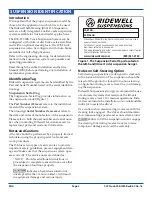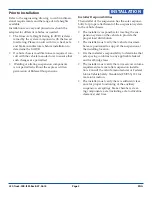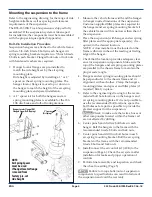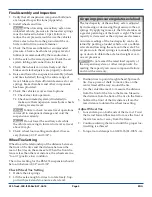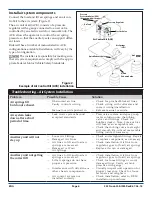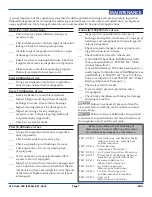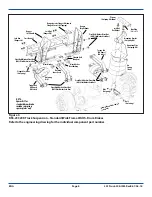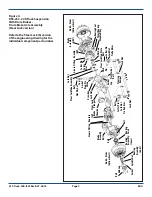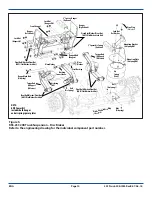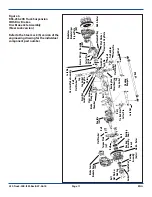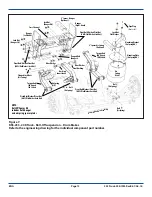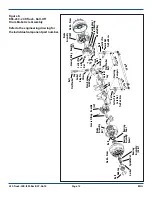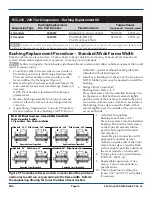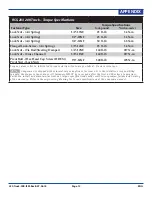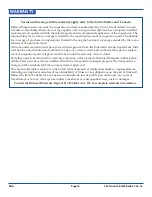
233-Truck-20K-ISM-RevB-07-06-18
Page 3
ENG
INSTALLATION
Installer Responsibilities
The installer of the suspension has the sole responsi-
bility for proper attachment of the suspension system
to the vehicle chassis.
• The installer is responsible for locating the sus-
pension system on the vehicle to provide the
proper load distribution.
• The installer must verify that vehicle crossmem-
bers are positioned to support the suspension at
the installing location.
• It is the installer’s responsibility to determine that
axle spacing conforms to any applicable federal
and local bridge laws.
• The installer must verify that air reservoir volume
requirements are met after suspension installa-
tion. Consult the vehicle manufacturer or Federal
Motor Vehicle Safety Standards (FMVSS) 121 for
more information.
•
The installer must verify there is sufficient clear
-
ance for proper functioning of the auxiliary
suspension, air springs, brake chambers, steer-
ing components, axle (including axle to driveline
clearance) and tires.
Prior to Installation
Refer to the engineering drawing to confirm dimen
-
sional requirements and the range of ride heights
available.
Installations can vary and procedures should be
adapted for different vehicles, as needed.
• The Gross Axle Weight Rating (GAWR) is deter-
mined by the system component with the lowest
load rating. Please consult with tire, wheel, axle
and brake manufacturers before installation to
determine the GAWR.
•
If vehicle chassis modifications are required, con
-
sult with the vehicle manufacturer to ensure that
such changes are permitted.
• Welding or altering suspension components
is not permitted without the express written
permission of Ridewell Suspensions.


